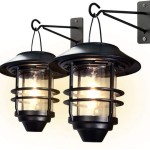Essential Aspects of Recessed Outdoor Lighting
Recessed outdoor lighting is a versatile and effective way to illuminate pathways, patios, and other outdoor spaces. It seamlessly integrates into the landscape, creating a subtle and elegant ambiance. However, designing and installing a recessed outdoor lighting system requires careful consideration of several essential aspects:
Functionality and Purpose
Determine the primary function of the lighting system. Is it intended for safety (illuminating paths and stairwells), ambiance (creating a warm and inviting atmosphere), or security (deterring trespassers)? Knowing its purpose helps guide lighting placement, fixture selection, and light intensity.
Light Source and Color Temperature
LEDs are preferred for recessed outdoor lighting due to their energy efficiency, long lifespan, and resistance to weather conditions. Choose a color temperature that complements the ambiance desired. A warm light (around 2700K) provides a cozy and welcoming atmosphere, while a cooler light (around 5000K) enhances visibility and creates a more modern look.
Fixture Selection and Placement
Recessed lighting fixtures come in various shapes, sizes, and materials. Select fixtures that blend with the outdoor décor and architectural style. Consider factors such as beam angle, light output, and corrosion resistance when choosing fixtures.
Proper placement is crucial to prevent glare and ensure optimal illumination. Plan the layout carefully, spacing fixtures evenly to avoid dark spots or excessive brightness. Use low-profile fixtures to minimize visual impact while providing adequate light.
Ingress Protection Rating (IP Rating)
The IP rating indicates the level of protection a fixture offers against water and dust intrusion. Choose fixtures with an IP rating of at least IP65 for outdoor applications, ensuring resistance to rain, snow, and other harsh elements.
Installation and Maintenance
Professional installation is recommended for recessed outdoor lighting to ensure proper function and safety. Follow manufacturer instructions carefully, using appropriate mounting hardware and electrical connections. Regular maintenance is necessary to clean fixtures and prevent dirt buildup, which can affect light output and longevity.
Additional Considerations
Other factors to consider include:
- Lighting control: Use dimmers or motion sensors to adjust light intensity or automate operation.
- Landscape integration: Conceal wiring underground or through soffits to maintain a clean and aesthetic appearance.
- Energy efficiency: Use energy-saving bulbs and fixtures to reduce electricity consumption.
By carefully considering these essential aspects, you can create an effective and visually appealing recessed outdoor lighting system that enhances the ambiance, safety, and beauty of your outdoor space.

Recessed Lighting For Exterior Spaces Rensen House Of Lights

8 Outdoor Recessed Lighting Ideas For Your Porch Flip The Switch

Guide To Choosing The Right Recessed Light Fixtures For Your Home Exterior

Using Recessed Lighting In Exterior Spaces Lightstyle Of Orlando

Outdoor Recessed Lighting Guide Tutor

Soffit Lighting Installing Outdoor Recessed Lights

Exterior Lighting By Visiv Features Recessed Lights And Spot Up Traditional Atlanta Outdoor Houzz

Recessed Led Down Lighting Outdoor Indoor Lights

Recessed Wall Light Fixture Thunder110 Arcluce S P A Led Round Square

How To Install An Ultra Thin Led Downlight Outdoors 1000bulbs







